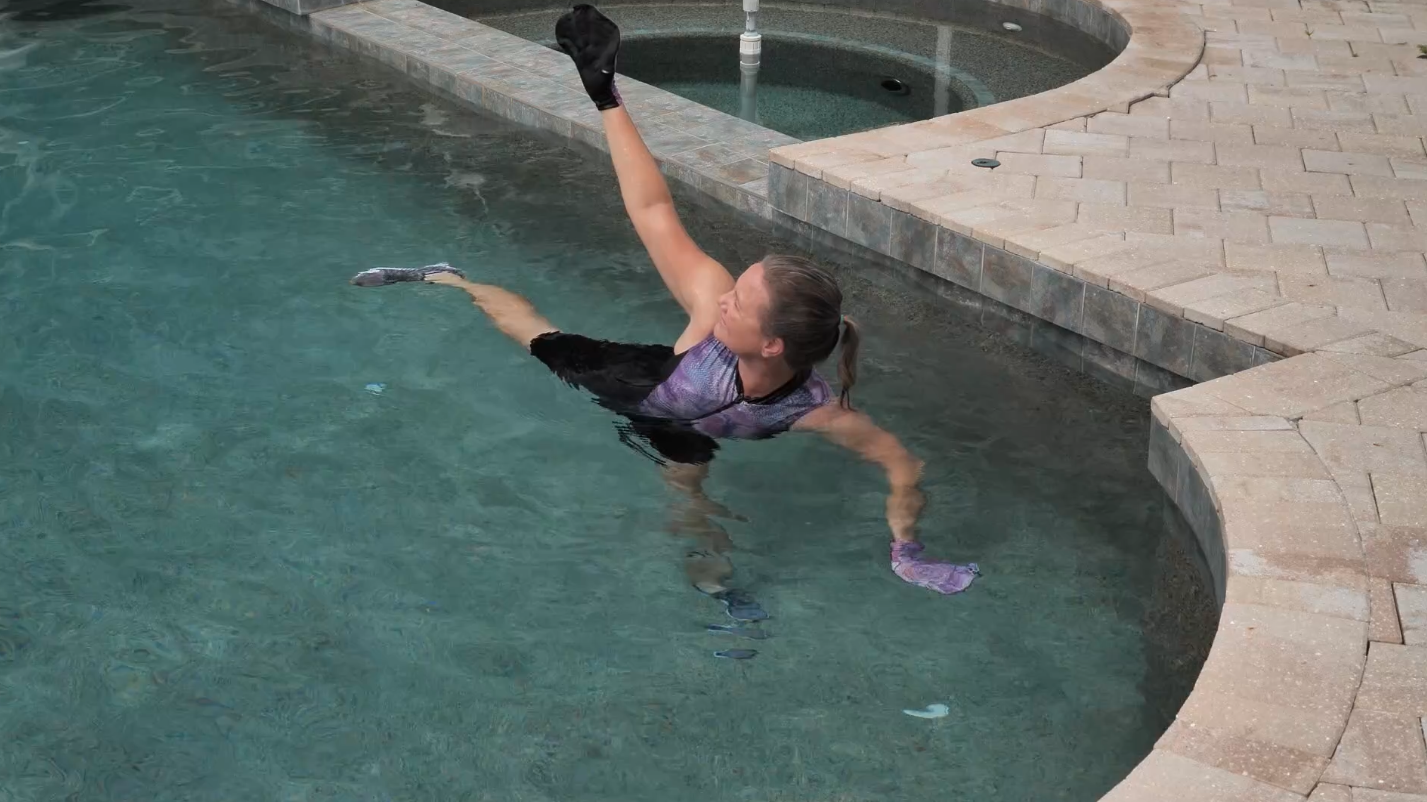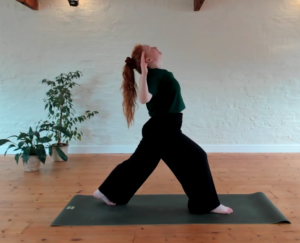Mobility is the ability to move freely and easily. If you want to be fast in a 5k race, prevent a fall on your next vacation, or avoid next-day body aches after gardening, you need to train for mobility—stretching alone is not enough.
Muscles are much like an elastic band, requiring different capabilities with every step, reach, or bend. They need elasticity to execute the move, strength to control it, and power to change directions; and these things need to be done repeatedly without fatigue if we’re to live a normal, mobile life. That’s why functional mobility isn’t just stretching; it’s flexibility, strength, endurance, and so much more working together.
Here are some practical tips and exercises to improve your functional mobility, inspired by our new results-driven program 28 Days to Functional Mobility:

1. Practice Dynamic Stretching
Dynamic stretching actively engages muscles throughout a motion, improving range, promoting overall function, and helping prevent injuries. Meant to keep the body moving, dynamic stretches also keep you warm when exercising in the pool.
Try This:
- Warm-up by cycling wide and narrow to promote range of motion.
- Add leg swings as active recovery between bouts of high intensity running.
- Finish your workout walking with big steps to bring the body back to a resting state.
Walking mobility is trained in Pivoting Power. A 30-minute, cardio-strength-HIIT circuit that works on pivot steps (in all directions) with different arm patterns that make the moves more cardio or core focused. Result: Greater core stability is felt as better posture and longer, safer stride lengths.
2. Engage in Functional Strength Training
Functional strength training involves exercises that mimic everyday activities, making daily tasks easier and reducing the risk of injury. Exercises like squats, lunges, and pushes replicate movements you do every day, such as getting in and out of a car or lifting groceries (bonus points for doing these against resistance in a pool!).
Try This:
- Perform squats and lunges with proper form to build lower body strength.
- Practice push-ups with a pool noodle to enhance upper body strength.
In Fast Mobility: The Grocery Shop Workout, you’ll practice in- and out-of-the-car squats, grocery cart push, and reaching high and low to pack goodies in the cart with progressive speed changes, keeping you strong and super capable.
3. Vary Your Speed and Intensity
Working out at variable speeds and intensities trains your muscles to handle different demands, improving overall functional fitness. This kind of variability boosts your cardiovascular health, muscular endurance and power production.
Try This:
- Alternate between slow and fast-paced running during your cardio sessions.
- Incorporate agility drills like side shuffles into your routine.
4. Power on!
Asking yourself to perform powerful movements—strength movements at a quick pace—does more than just burn calories. It helps us maintain and improve our global function, nervous system function, muscle and connective tissue health while promoting lean muscle. In fact, power training in the pool is the best thing people can do to stay independent.
Super-slow to fast-moving exercises are the focus of Fast Mobility: Grocery Shop & Power Balance Circuit, a 45-minute workout that is a surprising challenge for all fitness levels. You’ll experience walking drills around the grocery store-combined with power-balance circuits that will have your heart pumping and muscles wishing for rest.

5. Focus on Balance and Stability
Good balance and stability are crucial for preventing falls and improving overall movement efficiency. Balance training is not just about standing on one leg, in fact balance is best trained in motion. Practice standing with feet side-by-side or tandem, one foot directly in front of the other with gentle arm movements and feel your balance being challenged.
Try This:
- Try walking 3 steps, and hold in place while counting to 3 for better balance.
- Incorporate planks for posture and balance.
6. Include Gentle Yoga
Yoga enhances flexibility, balance, and strength, and it’s great for recovery and relaxation. Even 10 minutes of yoga can make a significant difference in your functional mobility.
Try This:
- Practice poses like Warrior II (side lunges) to stretch and strengthen your whole body.
- Incorporate deep breathing exercises to enhance relaxation and reduce stress.
Functional Mobility, a guided 28-Day program, includes six yoga sessions all under 15 minutes. These sessions target postures and movements that allow you to focus on areas that need the most attention in your body, such as the feet, knees, spine, shoulders, and hips.
7. Listen to Your Body: The Importance of Self-Assessment
The best way to learn exactly what your body needs is by moving in your feel good range; this is exercise while paying attention to the body’s response to each movement. This self-assessment helps you identify areas that need more focus and prevents overtraining or injury. It involves regularly assessing your progress and adjusting your workouts as needed.
Ask yourself:
- What did you feel that you didn’t notice before? For example, my right hip turns better than my left. I have better balance with my right foot forward.
- What do you feel more confident with now? This question can be asked both during and after a workout. Things like: I feel stronger when walking up the stairs. I can squat without knee pain.
See Results Faster Than Ever
Wavemakers are not workouts as usual; it’s about making life easier by moving towards a healthier body and keeping strong. You’ll stretch, build muscle, work on your cardio, and improve balance, power, and agility. Remember, it’s not just about the exercises themselves but about how they contribute to your overall ability to move freely and confidently through each day.
Ready to get started? Dive into our new guided program, 28 Days to Functional Mobility, to get instant access to 6 water workouts, and 6 yoga routines, as well as our engaged and thriving community to help you improve how you move.
